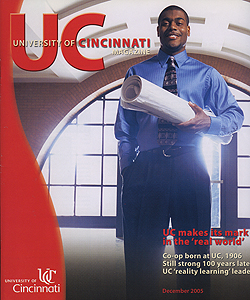photograph by Colleen Kelley
Bamboula, a Late Bronze Age city on Cyprus, was once a prosperous international trading center whose most-prized product may have been copper. These are among recent discoveries by a University of Cincinnati archaeological team led by Gisela Walberg, professor of Aegean prehistory.
"Analyses of metal objects in circulation during the 13th century have indicated that Cypriot copper was traded far beyond the island," Walberg notes, "and this copper must have come from the Troodos foothills (near Bamboula). The UC team previously found copper slag in a Late Bronze Age tomb there."
The UC site, Episkopi-Bamboula, examines one of four coastal urban centers built around 1500-1050 B.C. Situated on a low hill at the mouth of the Kouris River, the city could have sent various raw materials to the coast by water.
Among significant "finds" last year, Walberg says, were remnants of heavy fortification walls, which would have afforded considerable protection if the city were under attack. The team also discovered a hidden spring-fed cistern within the city's fortified border.
The university's archaeological team found a sequence of six floors that represent separate phases of Bamboula's history, all within one hillside last summer. Artifacts found near the sequence, the hidden cistern, an early Roman well and excavation trenches are still being studied by UC's experts.
Links:
First-person report about UC archaeology dig in Albania
In Focus Photo Gallery


